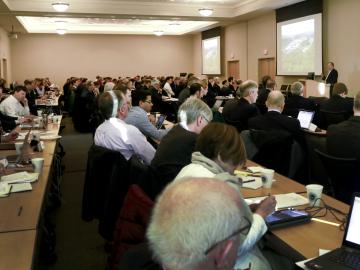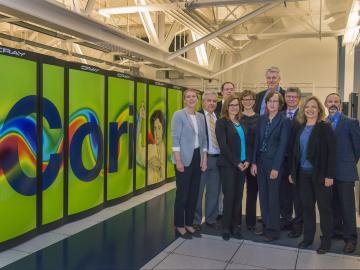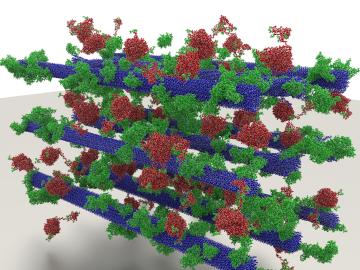Filter News
Area of Research
- Advanced Manufacturing (2)
- Biological Systems (1)
- Clean Energy (50)
- Climate and Environmental Systems (2)
- Fossil Energy (1)
- Fusion and Fission (1)
- Isotopes (1)
- Materials (43)
- National Security (2)
- Neutron Science (16)
- Nuclear Science and Technology (7)
- Renewable Energy (2)
- Supercomputing (22)
- Transportation Systems (1)
News Type
Date
News Topics
- 3-D Printing/Advanced Manufacturing (8)
- Advanced Reactors (3)
- Artificial Intelligence (18)
- Big Data (5)
- Bioenergy (8)
- Biology (9)
- Biomedical (5)
- Biotechnology (4)
- Buildings (10)
- Chemical Sciences (8)
- Clean Water (3)
- Climate Change (14)
- Composites (3)
- Computer Science (17)
- Critical Materials (5)
- Decarbonization (15)
- Emergency (1)
- Energy Storage (7)
- Environment (19)
- Exascale Computing (5)
- Fossil Energy (2)
- Frontier (5)
- Fusion (4)
- Grid (5)
- High-Performance Computing (12)
- Isotopes (6)
- ITER (1)
- Machine Learning (7)
- Materials (10)
- Materials Science (9)
- Mathematics (1)
- Mercury (2)
- Microscopy (2)
- Nanotechnology (2)
- National Security (12)
- Net Zero (4)
- Neutron Science (9)
- Nuclear Energy (6)
- Partnerships (8)
- Physics (2)
- Polymers (3)
- Quantum Computing (7)
- Quantum Science (9)
- Security (2)
- Simulation (10)
- Space Exploration (3)
- Statistics (2)
- Summit (4)
- Sustainable Energy (11)
- Transportation (8)
Media Contacts


Fuel economy data, sticker price, emissions information, safety ratings and much more is available at your fingertips with the latest Find-a-Car tool, an app designed specifically for easy searches on mobile devices. FuelEconomy.gov, maintained by the Department of Energy with d...


People in cold climates who heat with electricity could realize savings of up to 70 percent with a new heat pump developed by Oak Ridge National Laboratory and Emerson Climate Technologies. The tandem compressor system, developed through a cooperative research and development ag...

Adrian Sabau and Robert Wagner of the Department of Energy's Oak Ridge National Laboratory have been appointed fellows of the American Society of Mechanical Engineers (ASME), an honor conferred to members who have demonstrated significant, long-term engineering achievements.

Claus Daniel, materials scientist and deputy director of the Sustainable Transportation program at the Department of Energy’s Oak Ridge National Laboratory, delivered a Gilbreth Lecture at the National Academy of Engineering (NAE) annual meeting, held February 11 in...

Moving advanced nuclear reactors from the drawing board to the field was the focus of the Advanced Reactors Technical Summit III, hosted by the Department of Energy’s Oak Ridge National Laboratory and attended by 180 experts from industry, government and academia. The conference, ...

The Department of Energy’s Oak Ridge National Laboratory will support four new industry projects announced today as part of DOE’s High Performance Computing for Manufacturing (HPC4Mfg) Program. The program pairs selected companies with national labs, including ORNL...






